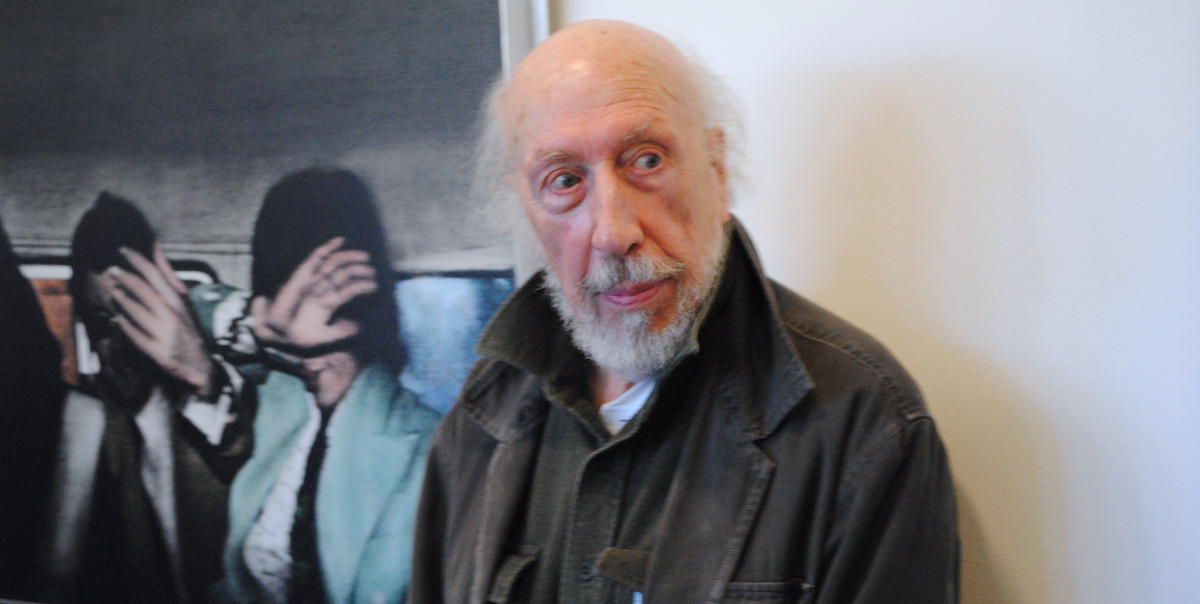Richard Hamilton the Godfather of ‘Pop Art’ has died at age 89. He was considered to be one of the most influential figures in the art world in the last century. His work covered most mediums including painting, sculpture, photography ,video and installation art. Hamilton recently held a successful retrospective exhibition at the Serpentine gallery.It was devoted to his political works which were considered controversial and thought provoking till the end.
Credited with coining the phrase “Pop Art” Hamilton influenced a generation of artists
Born in 1922 in London. He was educated at the Royal Academy Schools (1938-40, 146-48) and Slade School of Fine Art (1948-51). From 1952 he was a leading member of the Independent Group (along with Eduardo Paolozzi, Lawrence Alloway, Alison and Peter Smithson, and others) based at the Institute of Contemporary Arts, London. During the 1950s he organized a series of exhibitions including Man, Machine and Motion (1955) and, with others, This Is Tomorrow (1956), at the Whitechapel Art Gallery, London. In the 1960 he designed a typographic version of Marcel Duchamp’s Green Box, notes for ‘The Large Glass’ (1915-23) and in 1965-66, with Duchamp’s approval, he reconstructed Duchamp’s The Bride Stripped Bare by Her Bachelors, Even (The Large Glass). This is on view at Tate Britain.
Hamilton is also credited with designing The Beatles ‘White Album’ record cover. It was a radical concept at the time as it is the first album sleeve not to havnd members prominently displayed on the cover..
Hamilton’s Solo exhibitions include: Hanover Gallery, London (1964), and retrospectives at the Tate Gallery, London (1970 and 1992), Museu d’Art Contemporani de Barcelona (2003), and Museum Ludwig Cologne (2003). He presented ‘A Host of Angels’ in Venice (2007) and more recently his ‘Protest Pictures’ at the Inverleith House in Edinburgh (2008).was a British painter and collage artist. His 1956 collage, “Just What Is It that Makes Today’s Homes So Different, So Appealing?”. His “This Is Tomorrow” exhibition of the Independent Group in London, is considered by critics and historians to be one of the early works of Pop Art. Hamilton grew up in the Pimlico area of London. Having left school with no formal qualifications he gained work as an apprentice working at an electrical components firm. Here he discovered an ability for draughtsmanship and began to do painting at evening classes at St Martin’s School of Art which eventually led to his entry into the Royal Academy Schools. After spending the war working as a technical draftsman he re-enrolled at the Royal Academy Schools but was later expelled on grounds of “not profiting from the instruction”, loss of his student status forcing Hamilton to carry out National Service.[citation needed] After two years at the Slade School of Art, University College, London, Richard Hamilton began exhibiting at the Institute of Contemporary Arts (ICA) where he also produced posters and leaflets and teaching at the Central School of Art and Design.
Nicholas Serota, director of London’s Tate gallery, added: “His influence on subsequent generations of artists continues to be immeasurable. Greatly admired by his peers, including (Andy) Warhol and (Joseph) Beuys, Hamilton produced a series of exquisite paintings, drawings, prints and multiples dealing with themes of glamour, consumption, commodity and popular culture.”
Tributes have been pouring in from some of the most prominent corners of the art establishment. I was fortunate enough last year to have met with Richard the day before his exhibition opened at the Serpentine Gallery. He was a warm and lucid individual still making waves with his rendition of Tony Blair in a wild west sheriff’s outfit complete with two pistols. Hamilton’s work still made a difference. It continued to evolve throughout his long and influential career, particularly in his approach to processes and techniques. It focused on political and protest works exploring in depth the use of multiples in his work and the varied ways the artist has used photographic material to investigate representation in contemporary society.
Photo © Paul Carter Robinson ArtLyst 2010

